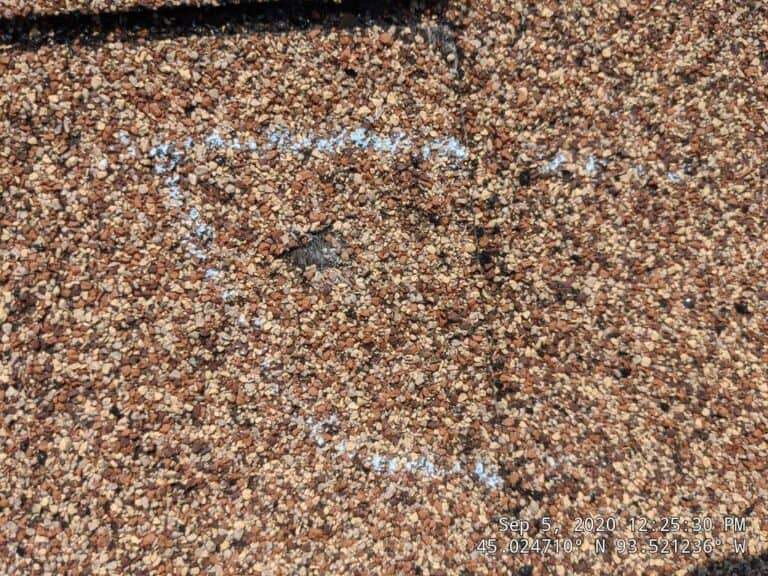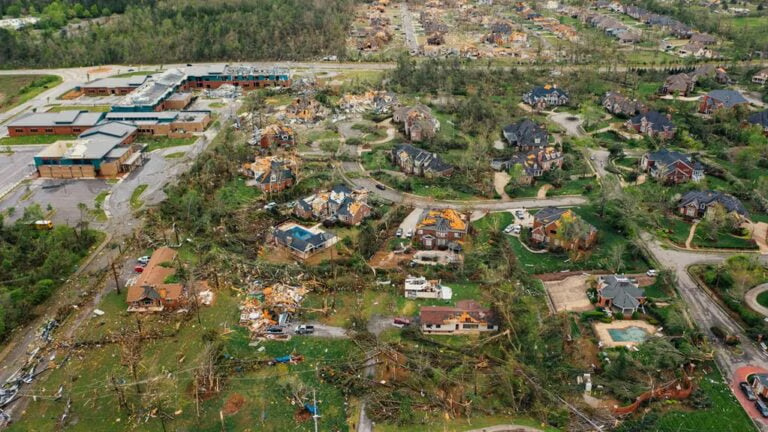Calculating Shingle Coverage: A Guide from Sellers Roofing CompanyTable Of Contents:
- Shingle Bundles: Coverage Area and Quantity Needed for Your Roof
- Understanding Shingle Bundle Basics for Your Project
- How Much Does a Bundle of Shingles Cover in Square Feet
- How Many Bundles of Shingles Do I Need Per Square for Roofing
- How Many Shingles in a Bundle of Asphalt Shingles Specifically
- Calculating Total Shingle Bundles for Your Entire Roof Area
- Practical Advice for Purchasing and Managing Shingle Bundles
- Frequently Asked Questions
- Final Thoughts
Shingle Bundles: Coverage Area and Quantity Needed for Your Roof
When planning a roofreplacement or new roof installation, one common question that arises is, “How many square feet are in one bundle of shingles?” Understanding the basics of shingle bundles, their coverage area, and how many bundles you need per square is critical for accurate budgeting and proper installation. In this article, you will learn exactly what to expect from a shingle bundle—from the contents of a typical bundle to how different shingle types and manufacturers can influence the coverage area. We’ll also explain how to calculate the total number of bundles needed based on your roof’s dimensions and offer practical advice for purchasing and managing your shingle bundles. Whether you are considering financing options for your roofreplacement or simply comparing roof shingle brands such as Owens Corning and CertainTeed, having an in-depth knowledge of these factors can help you avoid costly mistakes. Key topics include the standard area coverage per bundle, the common rule of three bundles per square, and variations for metric specifications. Finally, we address common installation concerns like waste management, the effect of roof pitch on shingle coverage, and tips for on-site storage to ensure that your project remains efficient and cost-effective.
Transitioning now into the specifics, read on to master the essentials of shingle bundles and prepare for a smoother, more economical roofing project.
Understanding Shingle Bundle Basics for Your Project

This section explains the fundamental building blocks of a shingle bundle, detailing what you can expect to find and which factors determine its specifications. When you purchase shingles, each bundle is packaged with a set number of pieces, which together are designed to cover a precise amount of roof surface. A bundle typically includes the individual shingle pieces along with any starter strips or adhesive components that may be required for proper installation. Understanding what is included in a typical shingle bundle can save you from over- or under-ordering materials during your roofing project.
What Is Included in a Typical Shingle Bundle
A typical shingle bundle contains several layers of overlapping shingle pieces, usually manufactured in different designs such as 3-tab or architectural. The 3-tab shingles tend to be uniform in size and shape, while architectural shingles vary in design and texture. Additionally, the bundle might include supplemental materials such as adhesive strips or secondary backing to ensure a tight, weatherproof fit. Each piece is precision-cut to work together, creating a fully overlapping system that protects your roof from water penetration and environmental wear. The consistency in quality and the careful alignment of these individual pieces contribute to the overall durability of your roof.
Key Factors That Determine Shingle Bundle Specifications
Several factors affect the specifications of a shingle bundle. First, the type of shingle—whether asphalt, wood, or composite—directly influences the weight and thickness of each bundle. Secondly, the manufacturing process and regional standards play a role in ensuring uniformity in the size and layering of the shingles. Variations in design such as color, texture, and dimensional tolerance can impact both aesthetic appeal and performance under various weather conditions. Manufacturers specify coverage area in square feet based on laboratory tests and real-world installations, making it imperative to always check product details or consult a roofing contractor if doubts persist.
How Shingle Type Impacts What Is in a Bundle
The shingle type you select—for example, standard asphalt, architectural, or even specialty solar shingles—affects the exact configuration of the bundle. Architectural shingles, for instance, are thicker and generally perform better under harsh conditions; therefore, bundles of these may contain fewer individual pieces per bundle compared to traditional 3-tab shingles. The composition and method of production also affect the longevity and resistance to damage from elements like algae or water damage. In essence, choosing the right shingle type will determine not only the appearance and durability of your roof but also the quantity you will ultimately need for full coverage, thus influencing your project cost and installation time.
How Much Does a Bundle of Shingles Cover in Square Feet

Knowing precisely how many square feet a shingle bundle covers is essential for budgeting and ensuring adequate material order. Manufacturers provide a “coverage” value, which is typically an estimate based on standardized installation practices. However, the actual coverage can vary depending on the shingle design, the roof’s pitch, and installation techniques used by professional roofers. Generally speaking, a single shingle bundle is designed to cover around 33.3 square feet of roofarea, but this number may not apply universally.
Standard Area Coverage for a Single Shingle Bundle
The industry standard for many asphalt shingles is that one bundle covers roughly 33.3 square feet. This estimate is based on the typical layout of shingles on a roof, where each shingle is overlapped by adjacent shingles. However, when it comes to newer designs or different shingle types, the standard coverage might differ. It is important to verify the manufacturer’s stated coverage before proceeding with your order. For instance, some high-end architectural shingles may claim slightly less area per bundle due to their thicker profile. Additionally, consider that slight overestimations in coverage may lead to gaps and potential water damage over time.
Variations in Coverage Due to Shingle Design or Manufacturer
Variations in design and manufacturing techniques can cause deviations in the coverage area per bundle. Some manufacturers produce shingles with larger exposure (the part visible after installation), which may lead to lower overall coverage per bundle. For example, shingle designs with a longer exposure may require more bundles to cover the same area compared to those with a shorter exposure. In addition, regional climate conditions can influence how shingles are produced, with manufacturers tailoring designs to better withstand local weather patterns such as high winds or heavy rain. It is important to review product specifications, as these variations can affect your material orders and the eventual cost of installation.
Confirming Exact Bundle Coverage With Product Details
Before finalizing any order, confirm the exact square footage coverage of each shingle bundle by examining the detailed product specifications. This information is typically provided in the technical sheet or on the packaging by the manufacturer. In many cases, roofing contractors will double-check these numbers to ensure that measurements match on-site conditions. Accurate confirmation is especially crucial when using non-standard designs or innovative roofing options like solar shingles. Always cross-reference the manufacturer’s data with installation guides or consult your contractor to avoid any undesirable shortages that may arise during the project.
How Many Bundles of Shingles Do I Need Per Square for Roofing

Calculating the number of shingles bundles needed per square is vital for an efficient and financially sound roofing project. In roofing terminology, a “square” refers to a 100 squarefootarea. The common industry guideline states that you typically need three bundles of shingles to cover one square of roofarea. However, several factors can cause this guideline to fluctuate, such as roof pitch, shingle overlap, and waste considerations during installation. Accurate determination of bundle needs helps avoid both shortages and excess material, ensuring that your project remains within budget.
Defining a RoofingSquare for Accurate Material Orders
A roofingsquare is defined as a unit of measurement equating to 100 square feet of roofarea. This term allows homeowners and contractors to streamline the process of estimating roofing material needs. Knowing the roof’s total square footage by performing a precise measurement—or having a professional measurement done—is the first critical step. Once you know your roof’s square footage, divide the total square footage by 100 to determine how many “squares” your roof contains. This conversion simplifies ordering materials since most shingle bundles are purchased in bundles per square.
The Common Three Bundles Per Square Guideline
For many standard asphalt shingle installations, the industry rule of thumb is that three bundles will cover one roofingsquare (i.e., 100 square feet). This rule accounts for overlapping shingles, starter strips, and potential waste. Although this guideline is widely accepted, the actual number may vary slightly based on shingle type, application method, and specific product coverage ratings. For example, if you are installing architectural shingles with a lower coverage rate per bundle, you might need more than three bundles per square. It is always best to consult the manufacturer’s specifications to determine the precise bundle requirement.
When You Might Need More or Fewer Than Three Bundles Per Square
While three bundles per square is typically recommended, there are cases where more or fewer bundles might be necessary. In steep roofing applications, the increased overlap required due to roof pitch might require additional bundles. Conversely, if your roof design or shingle style features larger individual pieces with a higher coverage rate, fewer bundles may be adequate. Also, installations that incorporate cutting waste, starter shingle rows, and ventilation requirements may alter the bundle count. Being aware of these factors and consulting with a professional roofer can ensure that you order the right quantity to cover your entire roof without unnecessary surplus or shortage.
Calculating Bundles for Metric Shingles if Applicable
If you use metric shingles or are in regions where shingle coverage is measured in square meters rather than square feet, the calculation method must be adjusted accordingly. First, convert the total roofarea into square meters, and then use the manufacturer’s stated coverage per bundle in square meters. This conversion is essential, as a standard roofingsquare in the metric system will differ from the U.S. customary measure of 100 square feet. Always refer to the product specifications for precise coverage, and use conversion factors appropriately (1 square meter equals approximately 10.76 square feet) to maintain accuracy in your calculations.
How Many Shingles in a Bundle of Asphalt Shingles Specifically

Determining the exact number of shingles in a bundle is essential for achieving the desired roof coverage and ensuring that installation proceeds smoothly. For asphalt shingles, the bundle piece count might differ depending on whether you are using standard 3-tab shingles or architectural shingles. Each type of shingle is manufactured to meet specific performance standards and aesthetic criteria. Knowing the typical piece count in a bundle can help you better estimate material requirements and plan for any waste that may occur during installation. This section delves into the specifics of asphalt shingle bundles and offers a comparison between various types.
Typical Piece Count for Asphalt Shingle Bundles
For standard 3-tab asphalt shingles, a bundle typically contains around 65 to 70 individual pieces. This is based on the conventional layout designed to cover a predetermined area with a specific amount of overlap. Architectural shingles, on the other hand, may have a lower piece count per bundle due to their larger and thicker design, which offers enhanced durability and visual appeal. It is important to review the specifications provided on the product packaging, as they often include both the number of shingles per bundle and the total coverage area.
Comparing Shingle Counts in 3-Tab Versus Architectural Bundles
Standard 3-tab shingles are usually more uniform in shape, leading to a higher count within the same bundle when compared to architectural shingles. Architectural shingles are designed with a layered, dimensional look, and therefore, manufacturers may include fewer pieces per bundle to maintain quality control and achieve the desired aesthetic effect. This difference means that while you might get 70 pieces in a bundle of 3-tab shingles, the same bundle of architectural shingles might contain around 60 pieces. Knowing these differences is crucial when comparing prices and coverage rates as well as ensuring that your roof’s appearance matches your design expectations.
Why the Number of Shingles Per Bundle Can Vary by Brand
The number of shingles in a bundle can vary by brand because manufacturers may have different production tolerances, quality standards, and design philosophies. For instance, some brands might favor a higher drop count per bundle to enhance wind resistance or promote better water shedding. Others may design their bundles to be more cost-effective, resulting in a slightly higher piece count within the same coverage area. Additionally, regional differences or updates in product formulations can contribute to variations between brands. It is always advisable to verify the product information for the exact brand you plan to use, as this can impact both your budgeting and installation process.
Relating Shingle Count to Overall Roof Coverage
Understanding how the shingle count relates to overall roof coverage is critical. The piece count directly informs the calculated coverage area per bundle. For example, if a bundle of shingles contains fewer pieces due to the design and thickness required for architectural appeal, it may cover fewer square feet compared to a standard 3-tab bundle. This relationship will affect the total number of bundles you need per roofingsquare. When planning your project, always multiply the coverage area stated on the bundle by the number of bundles to confirm that you have enough material to cover your entire roof without significant waste.
Calculating Total Shingle Bundles for Your Entire RoofArea

Accurately calculating the total number of shingle bundles needed for your roof is essential for project success. This involves not only understanding the coverage per bundle but also correctly measuring your roof’s dimensions, including any irregular areas, roofs with steep pitches, hips, valleys, and other complex features. Detailed measurements and appropriate adjustments for waste are critical to ensure that you order the correct quantity, thus avoiding costly shortages or overages.
Accurately Measuring Your Roof‘s Dimensions
First, obtain accurate measurements of your roof by measuring each section’s length and width. Roof dimensions are typically calculated using a tape measure or digital tools, then converted into square feet. For roofs with multiple sections or irregular shapes, break the roof into rectangles and triangles, calculate each area, and sum the totals. Precise measurements reduce errors in estimating the total roofarea, ensuring that the number of bundles ordered aligns closely with actual needs. When measuring, also account for any dormers, skylights, or other interruptions in the roof surface.
Adjusting Quantities for Roof Pitch and Complex Features
Roof pitch is another important factor in determining the total shingle bundle requirement. A steeper pitch causes increased overlap of shingles, which reduces the effective coverage per bundle. Additionally, complex roof features such as hips, ridges, valleys, and dormers can result in extra waste. To compensate, it is advisable to calculate an additional 10-15% of shingles to cover these challenging areas. Professional roofers often add this extra margin to avoid running short during installation. Detailed planning and adjustment ensure that you have all the materials necessary to accommodate these intricate aspects of your roof design.
Allocating Extra Bundles for Waste, Starter Strips, and Cap Shingles
During installation, not all shingles will be used due to cuts for edges, starter strips, and cap shingles. Waste is an unavoidable part of any roofing project and must be factored into your total material calculation. A general rule of thumb is to add an extra 10% to your total calculated bundle requirement. This extra allocation ensures that you have sufficient shingles to deal with errors, mis-cuts, and any unforeseen needs. By planning for waste, you not only streamline the installation process but also avoid delays or additional costs later in the project.
Getting the Right Amount for Hips, Ridges, and Valleys
Special roof sections like hips, ridges, and valleys require unique shingle pieces and additional material for proper overlapping and waterproofing. These areas typically necessitate separate calculations because the standard bundle coverage may not apply uniformly. For instance, hip and ridge bundles are usually sold separately, and they might require a different amount per linear foot than standard bundles. Ensure that you consult with your roofing contractor to determine the exact extra quantity required for these critical areas. Proper calculation here leads to a more precise order, reducing overstock and ensuring seamless installation across all challenging roof sections.
Practical Advice for Purchasing and Managing Shingle Bundles

When you have determined the number of shingle bundles required for your entire roof, practical considerations come into play. Purchasing and managing shingle bundles is not just about ordering the right number; it is also about ensuring that your materials are delivered in a timely and efficient manner and stored properly on-site until installation begins. This section provides actionable advice for managing packaging weight, selecting the best shingle type for your needs and budget, verifying uniformity across batches, and proper on-site storage to protect your investment.
Considering Shingle Bundle Weight for Transport and Installation
Shingle bundles can be quite heavy, and their weight varies by shingle type. For instance, architectural shingles are generally heavier than standard 3-tab shingles due to their thickness and multiple layers. When planning your transportation from the supplier to your site, consider the weight of each bundle to avoid potential mobility issues, damage during transit, or injury during handling. Proper equipment such as dollies or forklifts may be needed on site to unload and maneuver these heavy bundles safely. This consideration is especially important for larger roofing projects where the cumulative weight can significantly impact logistics and labor costs.
Selecting the Right Shingle Type for Your Project and Budget
There is a wide variety of shingle types in the market, ranging from economical standard asphalt shingles to high-end architectural or solar shingles. The right choice for your project depends on factors like durability, aesthetics, local climate, and budget constraints. While standard shingles may provide the most cost-effective solution, architectural shingles offer enhanced durability and visual appeal. Carefully weighing the initial investment against long-term roof performance can help you make a more informed decision. Additionally, compare warranties, manufacturer reputations, and installation support offered by different brands to ensure you select the product that best suits your roofing needs.
Ensuring Uniformity by Checking Shingle Batch Codes Upon Purchase
Uniformity in your roofing material is essential for both aesthetic continuity and performance reliability. Always check shingle batch codes before purchasing and during delivery to ensure that your complete order comes from the same batch. Inconsistencies in color, texture, or quality between different batches can result in uneven aging or a patchy look once installed. Verifying batch codes guarantees that all bundles work together seamlessly, reducing the risk of issues related to mismatched products. This simple step can save you time and money by preventing the need for partial reorders or replacements later.
Proper on-Site Storage of Shingle Bundles Before Use
Once your shingle bundles arrive on site, appropriate storage is critical to maintaining their quality. Shingles should be kept in a dry, covered area away from direct sunlight and moisture to prevent warping, deterioration, or algae growth. Improper storage conditions can lead to compromised structural integrity and reduced warranty periods. Organize your materials by labeling each bundle with its batch code and intended location on the roof. Additionally, elevated platforms or pallets can help protect the bundles from ground moisture and debris. Proper storage not only ensures that the shingles stay in excellent condition until installation but also facilitates a smoother, more efficient roofing process.
Frequently Asked Questions
Q: How many squarefeet does a standard shingle bundle cover?
A: A typical shingle bundle covers roughly 33.3 square feet, although this can vary depending on shingle design and manufacturer specifications. Always check the product details for the most accurate measurement.
Q: What is a roofingsquare, and how does it relate to shingle bundles?
A: A roofing square is defined as 100 square feet of roof area. Roofing contractors use this measurement to calculate the number of bundles needed, typically using the guideline of three bundles per square, but this may vary based on roof pitch and shingle type.
Q: Why do some roofsrequire more than the standard three bundles per square?
A: Steep pitches, complex roof features such as hips, ridges, and valleys, as well as additional waste from cuts, can elevate the bundle requirement beyond the standard three bundles per square. Each project should be evaluated individually.
Q: How do architectural shingles differ in bundle count from 3-tab shingles?
A: Architectural shingles are generally thicker and positioned for enhanced durability, resulting in a lower piece count per bundle compared to standard 3-tab shingles. This can affect the overall number of bundles required.
Q: What factors should I consider regarding shingle weight and storage?
A: Consider the bundle weight for safe transport and installation; heavier shingles like architectural types may require specialized equipment. Proper on-site storage in dry, covered conditions is essential to maintain shingle quality until installation.
Final Thoughts
In summary, understanding how shingle bundles work—including their contents, coverage, and the calculations needed for your roof—empowers you to make informed decisions for your roofing project. By accurately measuring your roof, adjusting for pitch and complex features, and considering critical factors like waste and storage, you can ensure an efficient and cost-effective installation. Accurate planning minimizes unexpected expenses and prevents potential delays, thereby protecting your investment. Take these insights to schedule an evaluation with your roofing contractor and enjoy the lasting benefits of a professionally installed roof.






